
George Elphinstone of Blythswood (died 1634) was a Scottish landowner, courtier, and Provost of Glasgow.

George Elphinstone of Blythswood (died 1634) was a Scottish landowner, courtier, and Provost of Glasgow.
George Elphinstone was the son of George Elphinstone of Blythswood (died 2 April 1585), a leading Glasgow merchant and shipowner, and Marion Scott.
He was knighted during the celebrations at the baptism of Prince Henry at Stirling Castle on 30 August 1594. He was made a gentleman of the king's bedchamber in 1596. [1] In this role he controlled the access to James VI of Scotland allowed to the English diplomatic agent, George Nicholson, occasionally bringing him secretly into the king's cabinet at Holyroodhouse. [2]
He was a member of a "knot of friendship" at the Scottish court that included the Secretary, Sir George Home, Sir Robert Kerr, the younger Sir Robert Melville, and Sir David Murray. [3] These chamber servants paid for the baptism of Princess Margaret in April 1599, because they had displaced the treasurer Walter Stewart of Blantyre. [4]
Elphinstone's popularity with the king helped the career of his sister Egidia's husband, James Sempill of Beltrees, a young diplomat and administrator who became involved in the Secret correspondence of James VI that would help put James on the throne of England. [5]
George Elphinstone had connections with the Western Isles and Ireland and was involved in negotiations between the West and the court. In October 1598, his mistress was mentioned as a recipient of diplomatic gifts from Sorley Boy MacDonnell, along with himself, the king, Anne of Denmark, and Beatrix Ruthven. [6]
In November 1599 George Elphinstone looked after a group of English comedians in Edinburgh. He was given money to buy timber to set up their stage, and in December gave them the king's reward of £333-6s-8d Scots. The actors included Lawrence Fletcher and Martin Slater. [7] Edinburgh's kirk session attempted to prevent the performances, despite a royal warrant. Martin Slater later gained the patronage of Anne of Denmark's brother, Ulrik, Duke of Holstein and set up the Red Bull Theatre in London. [8]
Elphinstone married Agnes Boyd, daughter of Thomas Boyd, Lord Kilmarnock, and Marion Campbell in August 1600. As a wedding gift James VI gave her a gold chain necklace and a gold belt set with pearls, and a pair of matching gold "garnishings" set with pearl to wear in her hair, worth £580 Scots. [9] After spending a weekend in Glasgow with the newly weds at the end of August, James VI gave Elphinstone land in the New Park of Partick to build a better house to entertain him in the next time. [10]
Elphinstone was a servant of the Duke of Lennox, and in September 1600 Lennox and the king nominated him Provost of Glasgow. His achievements as Provost include the 1605 Letter of Guildry, which established a merchant's guild with its Dean of Guild, a Deacon Convenor of the Crafts, and a Visitor of the Maltmen. He gained the enmity of the town council in 1608 when he claimed customs income from the town's market and bridge. [11]
One of the Elphinstone residences was on the site of 87–89 Main Street, Gorbals. In the nineteenth century the remaining buildings consisted of a small tower and an adjacent lodging with seventeenth-century decorative plasterwork on the ceiling of the upper storey.
George Elphinstone's younger brother Sir William Elphinstone was the secretary of Elizabeth Stuart, Queen of Bohemia. [12] In 1613 he argued with Hans Meinhard von Schönberg over cost-cutting measures in Elizabeth's household and resigned his post as secretary. [13] In 1626 he was a promoter of the colonial schemes of William Vaughan in Newfoundland at Cambriol. [14] He was cup-bearer to Charles I, Lord Justice General in Scotland (1635-1641), and knighted at Whitehall in February 1637. He and the Bishop of Galloway were targeted by protesters against the new prayer book on 18 October 1637. [15] He was buried in Westminster Abbey in December 1645. He left his estate to the architect and courtier, David Cunningham of Auchenharvie. [16]
The children of George Elphinstone and Agnes Boyd included;
Sir James Sempill (1566–1626) was a Scottish courtier and diplomat.
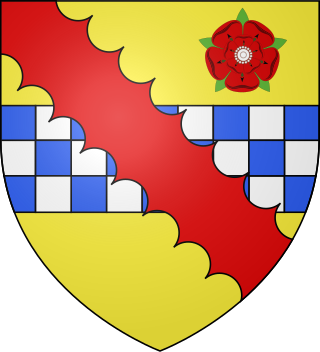
Walter Stewart, 1st Lord Blantyre (1555–1617) was a Scottish courtier and politician. He was Keeper of the Privy Seal of Scotland from 1582 to 1596 and Treasurer of Scotland from 1596 to 1599.
Archibald Douglas, Parson of Douglas, was also Parson of Glasgow, a Senator of the College of Justice, Ambassador to Queen Elizabeth I of England, and a notorious intriguer.

George Keith, 5th Earl Marischal (c. 1553–1623) was a Scottish nobleman and Earl Marischal. He succeeded as earl on 7 October 1581, upon the death of his grandfather, William Keith, 4th Earl Marischal.
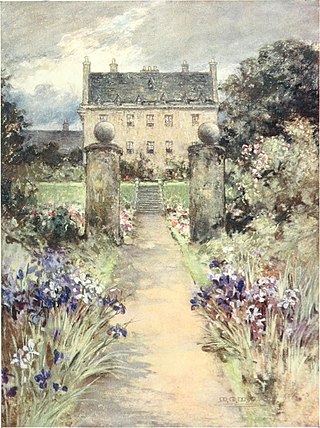
Sir Robert Drummond of Carnock was Master of Work to the Crown of Scotland from 1579 to 1583. This was the responsibility for building and repair of palaces and castles. His appointment was made to be "as Sir James Hamilton of Finnart had it."
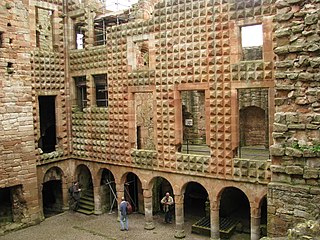
Francis Stewart, 5th Earl of Bothwell, was Commendator of Kelso Abbey and Coldingham Priory, a Privy Counsellor and Lord High Admiral of Scotland. He was a notorious conspirator who led several uprisings against his first cousin, King James VI, all of which ultimately failed, and he died in poverty in Italy after being banished from Scotland. Francis's maternal uncle, the 4th Earl of Bothwell, was the chief suspect in the murder of James VI's father, Lord Darnley.
Sir William Stewart of Houston was a Scottish soldier, politician and diplomat.
Thomas Boyd, 6th Lord Boyd (c. 1547–1611) was a Scottish noble and politician.

Margaret Stuart was the second daughter of King James VI of Scotland and Anne of Denmark. Sometime in March 1600, Margaret died of an unknown illness and she was buried in Holyrood Abbey. Three years later, her father ascended the throne of England.
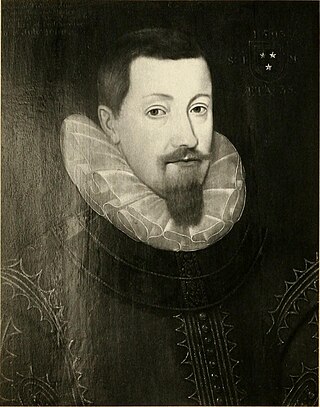
John Murray, 1st Earl of Tullibardine was a Scottish courtier and leader of the Clan Murray.
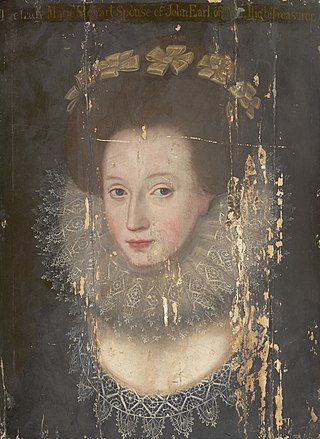
Marie Stewart, Countess of Mar (1576-1644) was a Scottish courtier. She was the daughter of Esmé Stewart, 1st Duke of Lennox and Catherine de Balsac d’Entragues (d. c.1631) and a favourite of James VI of Scotland. After her marriage, as was customary in Scotland, she did not change her name, and signed her letters as "Marie Stewart".
John Arnot of Birswick (Orkney) (1530–1616) was a 16th-century Scottish merchant and landowner who served as Lord Provost of Edinburgh from 1587 to 1591 and from 1608 to death. He was Deputy Treasurer to King James VI.
George Young was a Scottish churchman, courtier, member of the Privy Council of Scotland, diplomat, and secretary depute.

Alexander Elphinstone, 4th Lord Elphinstone (1552-1638), was a Scottish courtier, landowner, and Lord Treasurer.
Sir James Sandilands was a courtier to King James VI and I and captain of Blackness Castle
Sir William Keith of Delny was a Scottish courtier and Master of the Royal Wardrobe. He also served as ambassador for James VI to various countries. He was an important intermediary between George Keith, 5th Earl Marischal and the king, the king and courtiers, and the king and foreign governments.
Robert Jousie was a Scottish textile merchant, financier, and courtier. He was involved in the collection and administration of the English subsidy of James VI.
John Gordon, 13th Earl of Sutherland (1576–1615) was a Scottish landowner and courtier.

Queen Elizabeth I of England paid a subsidy to King James VI of Scotland from 1586 to 1602. This enabled her to influence James by delaying or deferring payments to his diplomats in London. Records survive of the yearly amounts, and details of the expenditure in some years. A large proportion of the money was spent on the royal wardrobe of James and Anne of Denmark. Some royal expenses were met by Anne of Denmark's dowry, which was known as the "tocher". The regular incomes of the Scottish crown were feudal rents, customs, and "compositions" charged on grants of land. Accounts for royal incomes and payments survive as the exchequer rolls and lord treasurer's accounts and have been published as historical sources.
George More was an English supporter of Mary, Queen of Scots, and a participant in the Throckmorton Plot. A Catholic exiled in the Spanish Netherlands, he visited the royal court of Scotland in 1598.